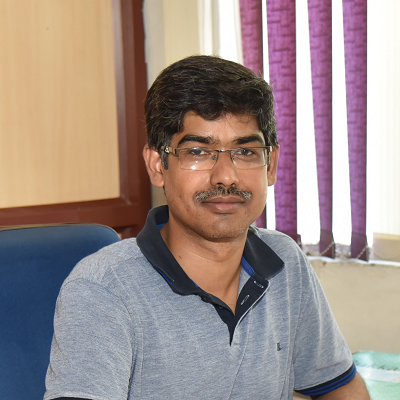
Dr Rajesh Kumar Gupta is an Assistant Professor in the Department of Physics at IIT Ropar. Dr Gupta completed his PhD at Harish-Chandra Research Institute, Allahabad, in 2010. Soon after, he held postdoctoral positions at Utrecht University and NIKHEF in the Netherlands, ICTP Trieste and King's College London before joining IIT Ropar in 2019 as an Assistant Professor.
Theoretical high energy physics
Phd (harish-Chandra Research institute, india)
Research associate, King's College London, U K, Oct 2016-May 2019
Postdoctoral fellow, ICTP Trieste, Italy, Oct 2012-Sept 2016
Postdoctoral fellow, NIKHEF, The Netherlands, Feb 2012-Sept 2012
Postdoctoral fellow, Utrecht University, The Netherlands, Oct 2010-Jan 2012
Phd, Harish-Chandra Research Institute, Allahabad, Aug 2004-Sept 2010
My publications can be found here:
http://inspirehep.net/search?p=author:R.K.Gupta.2 AND collection:citeable
In the past, I have worked on several projects that, in broad terms, were focused on understanding black holes and quantum field theory.
My current research interests lie in quantum field theory. Quantum field theory is the foundation of modern theoretical physics. It is a framework to build models of particle physics, e.g. the Standard Model, to describe phase transition in statistical systems, to understand the dynamics of electrons in solids, to investigate the behaviour of atoms in ultra-cold situations, and to determine quantitatively the microscopic structure of a black hole. Apart from this, quantum field theory also finds application across various topics in mathematics like Number Theory, Differential Geometry and Topology.
For the last few years, my research has been focused on exploring some of the above themes using the tools of quantum field theory. In summary, in my projects, I have looked at the following topics:
1) Black holes: Black holes play a significant role in understanding and, in some way, provide a window to look into the yet unknown quantum theory of gravity. One of the methods to do so is to understand the properties of quantum field theory on the black hole background. In my work, I have looked into certain perturbative and non-perturbative computations in quantum field theory on an extremal black hole background. More specifically, the interest is in understanding the thermodynamic properties of black holes and their statistical interpretation. This is achieved by studying quantum field theory on a black hole background and, more generally, on a curved background.
2) Supersymmetric quantum field theory: Quantum field theory is very well understood when the interactions between particles are small. However, we still do not have systematic analytical methods to treat the case of strongly interacting particles. One such example is the quantum field theory of quarks and gluons, which is a strongly interacting system. Extra symmetries are useful in shedding some light on the strongly interacting scenario. One such symmetry is supersymmetry. Supersymmetry is powerful enough to make certain computations exact in the strength of interactions. In my work, I have looked at various computations, e.g. partition function, using the tools of supersymmetric localization. These are exact in interaction strength and, as a result, contain a quantitative understanding of a strongly interacting system.
3) (Mock)Modular forms: The modular group is a symmetry of a 2-dimensional conformal field theory. The partition function of the conformal field theory when it is placed on a 2-dimensional torus can be expressed as the product of modular forms. The research in this direction also has an interdisciplinary aspect relating to counting problems in black hole physics and the holomorphic modular forms in number theory. In my research, I have looked into another class of modular forms which are called mock modular forms, discovered by Ramanujan. These are real but modular.
Ms. Meenu (PhD Student)
Mr Siddhant Tiwari (PhD student)

